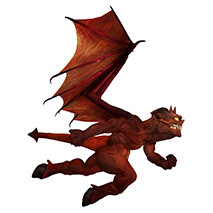I’ve covered a selection of theatrical lighting rigs already that use three lights. I was sent an e-mail asking if I’d show a definitive version of the classic three point lighting rig used for film, television, photography and computer graphics. I’m not going to claim to have any experience of using this rig, I have seen it used by a TV crew but that’s my entire level of real world knowledge. One thing I do know is that whenever I’ve tried to find a definitive explanation of it I’ve discovered quite a few variations on a theme rather than one three point lighting rig that everyone swears to. From what I’ve read it originally evolved from the three point theatrical rig when film and later TV emerged.
The basics don’t vary that much. Light sources from three directions are used. These are usually called the key light, the fill light and the backlight. The key provides the main light source from the front. The fill comes from the front and softens the shadows cast by the key as well as filling in any other dark spots. The backlight comes from somewhere behind the subject, it adds highlights to the edges and separates the subject from the background. Sometimes, when a studio set up is being simulated, a forth light is added called the background light.
The first major difference is about where the key should be placed. Some explanations I’ve read place it above the subject at around thirty degrees to the horizontal. Others say to place it where a real light source would be shining from. It is usually placed to one side of the subject from the front.
The fill is a light placed to the front at roughly ninety degrees from the key. It is placed lower than the key at around eye level and its angle to the horizontal is closer to than the key. The fill is usually a softer light source. It is also usually not as bright as the key.
The backlight is the third and final light, sometimes called the rim light. Again different explanations place the backlight in different places. Some examples, particularly those for portrait photography of subjects with hair, place it as a horizontal light close to the rear of the subject shining straight forward. Others place it to the rear of the subject pointing straight forward but raise it above the subject and shine it down at a steep angle, almost like a godspot from behind. The final popular location is to place it behind the subject one hundred and eighty degrees to the fill and at ninety degrees to the key.
If a background light is used it is behind the subject and shines onto the background to illuminate it.
The next source of schism between the descriptions is in the relative brightness of the three lights. Some sources quote formulas and ratios for the different lights depending on if a high key or a low key style is preferred.
Adding to the complication of creating a three light rig in computer graphics, such as when using Vue, are the imperfection of rendering in simulating real world lights.
Some problems, like the fill light casting a shadow can be avoided in some packages by simply turning off the source’s shadow casting. This can be done in Vue 6 Infinite, Vue 6 xStream, Vue 6 Pro Studio and Vue 6 Esprit with the light tune module. It can’t be done in Vue 6 Esprit or Vue 6 Easel.
To simulate a soft fill source it may sometimes be necessary to use several faint light sources as the fill light placed at slightly different positions but all shining in the same direction.
In the real world backlights gain a lot of impact from shining on the tiny hairs the surface of a subject’s skin and through a full head of hair with many separate strands. Computer generated hair on skin surface however is usually none existent and head hair is often either simulated with layered transparency mapped polygons or is made up of significantly fewer hairs than a real person. So as to get a rim of highlights to separate the subject from the background a single backlight behind may not be enough. Instead it may either need to be raised up and angled down or a series of sources may need to be placed around the subject to shine onto the subject’s edge.
Three point lighting’s biggest shortcoming is that it is an overused cliché. Its style is that of millions of unoriginal studio portraits and almost as many uninspired 3d renders. I’ve read that with better technical innovations it has fallen into disuse in a lot of television and film production.
I’ve not had time to write this and produce any example renders. Despite my misgivings about this rig I do think it can sometimes be useful and so for next time I’m hoping to produce examples of several of the variations I’ve mentioned today.
Read:
Vue Lighting Rig #16: Three Point Lighting- Part 2 and Vue Lighting Rig #16: Three Point Lighting- Part 3

Leave a Comment